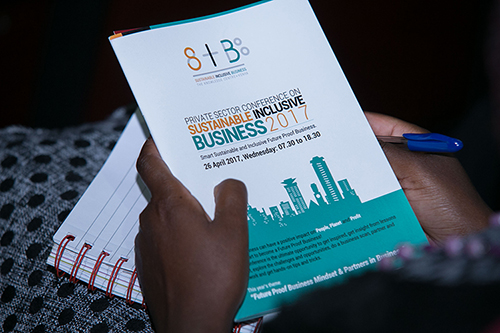23rd March 2017
This article was featured in the Business Daily
Agriculture is one of the few sectors that hold the greatest promise for prosperity, especially for people who are willing to take the risk, roll up their sleeves and work. But government must create an enabling environment.
No country can prosper unless it is able to produce enough food to feed its people in a sustainable manner. A lot of resources committed to infrastructure development cometo nought when food shortages mess up with inflation.
The culture of consumption has all but trumped the need to produce. We are building more malls, stuffing them with imported electronics, clothes, furniture, foodstuffs and whatnot to be consumed by a very small proportion of the population who have disposable income. There is nothing wrong with investing in malls and supermarkets. Wouldn’t it be better, however, to stuff them with locally produced products? If not, who is really producing to create the nation’s wealth? Who is producing to create jobs for a ballooning youth population? And why is investing in malls seemingly more lucrative than investing in agriculture?
The agricultural sector contributes an estimated 24 per cent to Kenya’s GDP directly and 27 per cent indirectly through linkages with other sectors. With over 80 per cent of the population, mainly those living in rural areas, relying on agriculture for their livelihoods, the sector’s contribution to the GDP should be far higher than it is at the moment.
To its credit, the government launched the Agricultural Sector Development Strategy whose primary goal was to make agriculture a key contributor to the anticipated 10 per cent economic growth per annum. The government’s aim was to turn agriculture into a profitable economic activity which not only creates jobs but also attracts private sector finance. But the government is yet to match its pronouncements with concrete action. In the 2016/2017 financial year, for instance, only 1.3 per cent of the national budget was allocated to the agriculture docket contrary to the Maputo Declaration which called on governments to commit at least 10 per cent to agriculture every year to realise rapid growth.
Evidently, there is no shortage of private sector finance or indeed of private sector players who could put their money in agriculture. But no one wants to tie their money in sectors that don’t promise returns in reasonable time. And certainly, the agricultural sector will not make much progress without private sector involvement. Where do we go from here?
There are serious policy gaps which need to be addressed. Drought aside, the other principal cause of food insecurity is the high cost of production owing to high cost of inputs. Apart from a few subsectors such as horticulture, tea and commercial timber, agriculture remains unattractive to investors who shun it for sectors that promise quick returns. Even those who practice agriculture purely for subsistence struggle to do so.
Agriculture is a devolved function. This means most functions under the agriculture docket are currently under county governments. That notwithstanding, the two levels of government should consider an arrangement similar to the export processing zones (EPZ) where investors willing to invest in actual food production and value addition can be given tax holidays to produce affordable food in designated zones for say, 10 years. The investors will produce food, first and foremost for the local market and surplus for export. They will also be expected to add value to the food they produce thereby ensuring small holder farmers get to plug the supply deficit.


